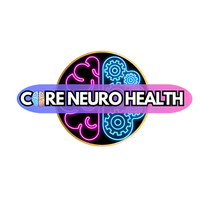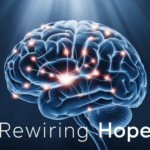Ever feel like getting out of bed takes more energy than running a marathon? You’re not alone. Nearly 280 million people worldwide struggle with depression, yet half never seek help because they don’t recognize the warning signs.
I’m going to walk you through the seven red flags of depression that often get dismissed as “just having a bad day” or “being dramatic.”
Depression symptoms can be sneaky – they don’t always look like the obvious sadness portrayed in TV commercials. Sometimes they hide in plain sight, disguised as irritability, physical pain, or simply not enjoying things anymore.
By the end of this article, you’ll know exactly what early warning signs to watch for in yourself or someone you care about. And trust me, knowing what to look for might be the difference between suffering silently for years or getting help when it matters most.
What is depression?
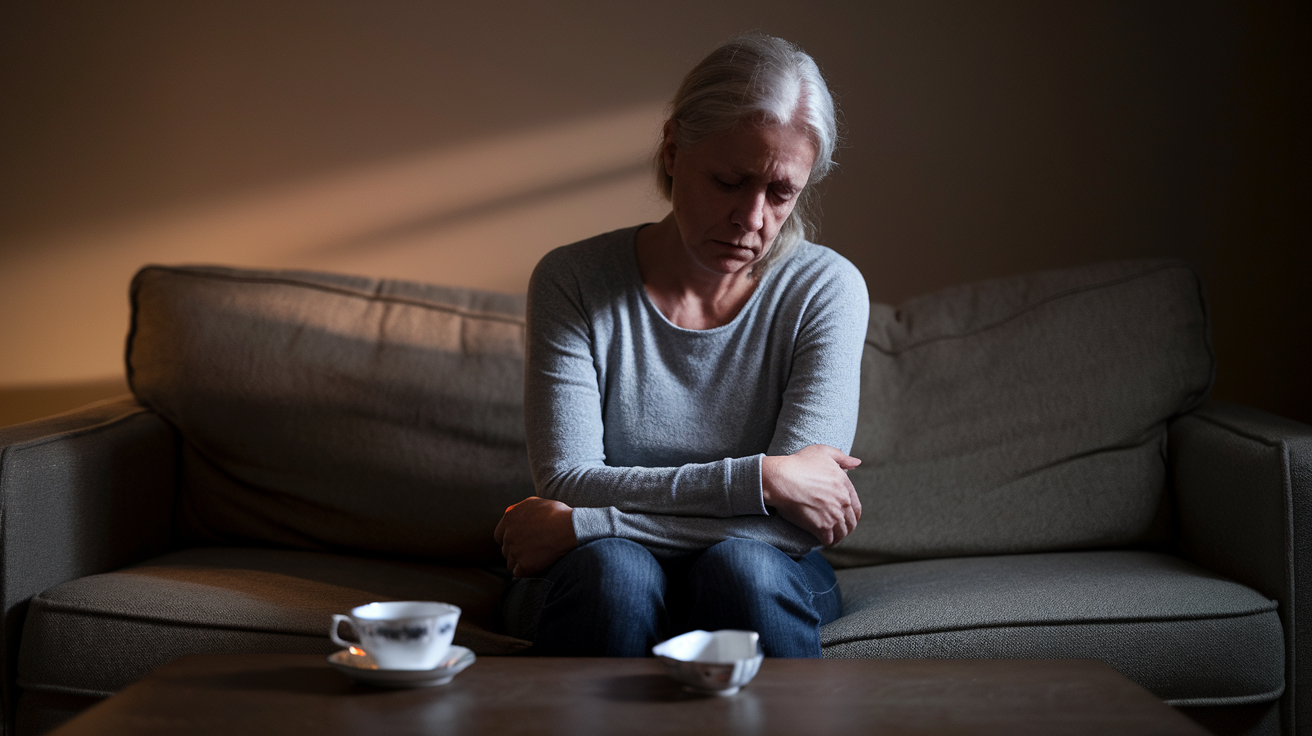
Depression isn’t just feeling sad for a day or two. It’s a serious mental health condition that affects how you think, feel, and handle daily activities.
When someone has depression, they experience persistent feelings of sadness and hopelessness that don’t go away on their own. It’s more than just having a bad day or feeling down after a disappointment. Depression sticks around, often for weeks or months, and interferes with normal functioning.
The Clinical Definition
Clinically speaking, depression (major depressive disorder) is diagnosed when someone experiences specific symptoms nearly every day for at least two weeks. These symptoms affect your mood, thoughts, and physical well-being.
Think about depression as a dark filter that colors everything in your life. Things that once brought joy might seem pointless. Getting out of bed can feel like climbing a mountain. Even basic self-care might seem overwhelming.
Types of Depression
Depression isn’t one-size-fits-all. It shows up differently for different people:
- Major Depressive Disorder: The most common type, characterized by persistent low mood, loss of interest in activities, and other symptoms that significantly impact daily life.
- Persistent Depressive Disorder (Dysthymia): A longer-lasting form of depression where symptoms continue for at least two years, though they might be less severe than major depression.
- Seasonal Affective Disorder (SAD): Depression that occurs during particular seasons, most commonly fall and winter when daylight hours are shorter.
- Postpartum Depression: Occurs after childbirth and goes beyond the typical “baby blues,” affecting approximately 1 in 7 new mothers.
- Premenstrual Dysphoric Disorder: Severe depression symptoms that occur before menstruation and typically improve once menstruation begins.
- Bipolar Depression: The depressive phase of bipolar disorder, which alternates with periods of abnormally elevated mood (mania or hypomania).
Depression doesn’t discriminate. It affects people of all ages, genders, and backgrounds. While women are diagnosed with depression about twice as often as men, this may partly reflect different ways of expressing distress and seeking help rather than actual prevalence.
What Happens in the Brain
Depression isn’t just psychological—it has biological roots. When you’re depressed, there are actual changes happening in your brain.
The three main neurotransmitters involved in depression are:
- Serotonin: Often called the “feel-good” chemical, it helps regulate mood, sleep, and appetite.
- Norepinephrine: Affects how the brain responds to events, particularly how it pays attention and responds to actions.
- Dopamine: Influences motivation, pleasure, and emotional responses.
In depression, these chemicals get out of balance. The communication between brain cells becomes impaired, affecting mood, thinking, and behavior.
Brain imaging studies show that certain areas of the brain function differently in people with depression. The prefrontal cortex (involved in decision-making) and the amygdala (processes emotions) show altered activity. The hippocampus, important for memory, can even shrink during prolonged, untreated depression.
Depression vs. Sadness: Spotting the Difference
We all feel sad sometimes. It’s a normal, healthy emotion in response to difficult situations. But depression is different.
Here’s how to tell them apart:
| Sadness | Depression |
|---|---|
| Usually has a specific trigger | May occur without any obvious reason |
| Comes and goes | Persists for weeks or months |
| You can still find joy in some activities | Loss of interest in almost all activities |
| Self-esteem usually remains intact | Includes feelings of worthlessness and self-loathing |
| Generally doesn’t affect appetite or sleep long-term | Often causes significant changes in appetite and sleep patterns |
| Diminishes over time | Doesn’t improve without intervention |
Grief can look similar to depression, especially after losing someone important to you. The key difference: grief comes in waves and gradually improves, while depression tends to be more persistent and pervasive.
Risk Factors for Depression
Depression typically results from a complex mix of factors, not just a single cause:
Biological Factors:
- Family history and genetics
- Brain chemistry imbalances
- Certain medical conditions like thyroid disorders, chronic pain, or cancer
Psychological Factors:
- Low self-esteem
- Perfectionism or self-criticism
- Negative thinking patterns
Environmental Factors:
- Childhood trauma or abuse
- Major life changes or stressors
- Chronic stress or ongoing difficulties
- Substance abuse
Social Factors:
- Isolation or lack of social support
- Relationship problems
- Financial difficulties
Having risk factors doesn’t guarantee you’ll develop depression, but it increases the likelihood. Similarly, some people develop depression without any obvious risk factors.
Depression Across the Lifespan
Depression looks different depending on your age:
In Children:
- More irritability than sadness
- Clinging to parents
- Refusing to go to school
- Physical complaints like stomachaches or headaches
In Teenagers:
- Irritability and anger
- Sensitivity to criticism
- Withdrawal from some, but not all social situations
- Poor school performance
- Risk-taking behaviors
In Adults:
- Persistent sad, anxious, or “empty” mood
- Loss of interest in previously enjoyed activities
- Difficulty concentrating or making decisions
- Sleep disturbances
In Older Adults:
- More physical symptoms
- Less likely to acknowledge feelings of sadness
- Memory problems that might be confused with dementia
- More likely to report fatigue and physical pain
The Global Impact
Depression isn’t just a personal struggle—it’s a global health crisis. According to the World Health Organization, depression is a leading cause of disability worldwide and a major contributor to the overall global burden of disease.
Approximately 280 million people around the world have depression. That’s more than the entire population of Indonesia, the fourth most populous country on Earth.
The economic impact is staggering too. Depression leads to lost workdays, decreased productivity, and increased healthcare costs. In the U.S. alone, depression is estimated to cost over $210 billion annually.
The Good News
Despite how overwhelming depression can seem, it’s one of the most treatable mental health conditions. Between 80-90% of people with depression eventually respond well to treatment.
Treatment approaches include:
- Psychotherapy (particularly cognitive-behavioral therapy and interpersonal therapy)
- Medication (antidepressants)
- Lifestyle changes (exercise, improved sleep habits, stress reduction)
- Social support
- Brain stimulation therapies (for treatment-resistant cases)
The key is recognizing the signs early and seeking help. Depression rarely improves on its own, but with proper treatment, recovery is absolutely possible.
Where can I learn more about depression?

Free health information
Finding reliable information about depression is crucial when you’re trying to understand what’s happening with you or a loved one. The good news? There are tons of free resources out there.
The National Institute of Mental Health (NIMH) website should be your first stop. They offer easy-to-understand fact sheets on depression that break down symptoms, causes, and treatments without the confusing medical jargon. You can download these as PDFs or read them online.
Mental Health America provides free screening tools you can use anonymously. They won’t diagnose you (only a doctor can do that), but they can help you figure out if what you’re experiencing might be depression.
Your local library probably has more resources than you realize. Many libraries partner with mental health organizations to offer free pamphlets and books. Some even host mental health workshops where you can learn about depression in a supportive environment.
Don’t overlook YouTube as a resource. Channels like “PsychHub” and “The Depression Project” create videos explaining depression symptoms, treatment options, and coping strategies. Just make sure the channel is run by qualified mental health professionals.
The Depression and Bipolar Support Alliance offers free online support groups where you can learn from others’ experiences. Sometimes hearing how others cope with depression can provide insights you won’t find in clinical materials.
Remember those community bulletin boards at your grocery store or coffee shop? They often have flyers for free mental health workshops or information sessions happening in your area.
And if you’re more of a podcast person, check out “The Hilarious World of Depression” or “The Mental Illness Happy Hour.” Both tackle depression with honesty and even humor, making tough information easier to digest.
Science updates
The world of depression research moves pretty fast. Keeping up with the latest findings can give you hope and new directions to explore.
NIMH’s research updates section is regularly refreshed with the latest depression studies. They translate complex scientific findings into language anyone can understand. Their “Science News” section highlights breakthroughs that might lead to better treatments down the road.
The American Psychological Association publishes regular updates on depression research in their journals. While some require subscriptions, their blog posts summarizing key findings are free to access.
Science Daily’s mental health section compiles research news from universities worldwide. They cover everything from new treatment approaches to discoveries about depression’s biological mechanisms.
PubMed is a bit more technical but incredibly valuable. This database of medical research papers includes thousands of studies on depression. Many now include “plain language summaries” designed for non-scientists.
Universities often share their depression research findings through press releases. Check the websites of major universities with psychiatric departments – places like Harvard, Stanford, and UCLA regularly post about their latest discoveries.
Clinical trials represent the cutting edge of depression treatment. The ClinicalTrials.gov website lets you search for studies investigating new approaches to depression. Some are looking for participants, which could give you access to treatments not yet widely available.
Google Scholar can be overwhelming at first, but using search terms like “depression treatment innovations” or “new approaches to depression” can uncover fascinating research you might not find elsewhere.
Social media has become a surprisingly good place to follow depression research. Many researchers now have Twitter accounts where they share their work in accessible ways. Following hashtags like #DepressionResearch can connect you with the latest findings.
Remember that single studies rarely represent scientific consensus. Look for patterns across multiple studies, and pay special attention to meta-analyses that combine results from many studies to draw stronger conclusions.
Statistics
Numbers tell a powerful story about depression – they show you’re far from alone in this struggle.
According to the World Health Organization, more than 264 million people worldwide live with depression. That’s roughly the population of Indonesia – the fourth most populous country on Earth.
In the United States, the National Institute of Mental Health reports that approximately 7.1% of adults experienced at least one major depressive episode in the past year. That’s about 17.3 million people.
Depression doesn’t discriminate by age, but it does affect some groups more than others. Young adults aged 18-25 have the highest rates of depression at 13.1%, significantly higher than the general population.
Women experience depression at nearly twice the rate of men. About 8.7% of women had a depressive episode in the past year compared to 5.3% of men. This gender gap appears across cultures and countries.
The economic impact is staggering. Depression is the leading cause of disability worldwide and costs the global economy an estimated $1 trillion annually in lost productivity.
Only about half of those experiencing depression receive treatment. In some low-income countries, fewer than 10% of people with depression have access to effective treatments.
Teens are increasingly affected. Depression rates among adolescents increased by 63% between 2007 and 2017. Social media use, academic pressure, and changing social dynamics may all play a role.
The link between depression and physical health is significant. People with depression have a 40% higher risk of developing cardiovascular and metabolic diseases than the general population.
Depression often doesn’t travel alone. About 60% of people with depression also experience an anxiety disorder, showing how mental health conditions frequently overlap.
The COVID-19 pandemic dramatically increased depression rates. A CDC study found symptoms of depression were four times higher during the pandemic than in the previous year.
Treatment statistics offer hope. Between 80-90% of people with depression eventually respond well to treatment. The challenge remains connecting people to the help they need.
These statistics help us understand the scope of depression, but remember – behind every number is a person with unique experiences. Your journey with depression is your own, even while being part of this larger picture.
By staying informed through these various resources, you gain power over depression. Knowledge helps you recognize symptoms earlier, find effective treatments faster, and understand that depression is a common, treatable condition – not a personal failing or something you have to face alone.
Why is NIMH studying depression?

The National Institute’s Mission
Depression isn’t just another mental health condition—it’s one of the most prevalent and devastating illnesses worldwide. That’s exactly why the National Institute of Mental Health (NIMH) has made it a priority research area.
NIMH invests millions each year studying depression because this condition affects nearly 21 million American adults. Behind that statistic are real people struggling with a serious illness that impacts their relationships, work performance, and quality of life.
The research isn’t just academic curiosity. NIMH scientists are working urgently to develop better treatments, identify risk factors, and ultimately find ways to prevent depression before it takes hold.
Bridging the Knowledge Gap
Despite decades of research, we still have huge gaps in our understanding of depression. Scientists at NIMH are tackling questions like:
- Why do some people develop depression while others facing similar circumstances don’t?
- What happens in the brain during depression?
- Why do treatments work for some people but not others?
These aren’t simple questions. The brain is incredibly complex, and depression isn’t caused by a single factor. It’s a combination of genetic, biological, environmental, and psychological elements all interacting in ways we’re still trying to figure out.
NIMH researchers use everything from brain imaging to genetic testing to long-term observational studies to piece together this puzzle. Each discovery builds our understanding and gets us closer to better solutions.
Beyond the “Chemical Imbalance” Theory
For years, depression was explained as simply a “chemical imbalance” in the brain. NIMH research has shown it’s much more complicated than that.
Depression involves multiple brain systems, neuronal circuits, and complex interactions between stress hormones, immune function, and neuroplasticity (how the brain forms and reorganizes connections).
NIMH-funded studies use advanced techniques like optogenetics (using light to control neurons) and chemogenetics (using designer drugs to control cell activity) to understand these complex systems better.
This matters because when we understand depression more completely, we can develop treatments that target the right mechanisms instead of using the current trial-and-error approach that leaves many people suffering for months or years before finding effective help.
Developing New Treatments
Current depression treatments don’t work for everyone. About one-third of people with depression don’t respond adequately to available medications. NIMH’s research aims to change that.
NIMH has been at the forefront of studying innovative treatments like:
- Rapid-acting antidepressants (like ketamine derivatives)
- Transcranial magnetic stimulation
- Novel psychotherapies
- Precision medicine approaches that match treatments to specific biological markers
The institute’s researchers aren’t just looking at symptom reduction—they’re studying treatments that might actually address underlying causes and prevent recurrence.
Identifying At-Risk Populations
Depression doesn’t affect everyone equally. NIMH research has highlighted disparities in who gets depression and who receives adequate treatment.
Studies show higher rates of depression in:
- Women (nearly twice the rate as men)
- Young adults (18-25)
- People with chronic health conditions
- Socioeconomically disadvantaged populations
- Certain minority groups
By identifying who’s most at risk, NIMH can direct resources where they’re needed most and develop targeted interventions that address the specific needs of vulnerable populations.
Translating Research to Real-World Impact
All the scientific discoveries in the world don’t help if they stay locked in research journals. NIMH is committed to translating findings into practical tools and resources.
The institute funds implementation science to study how to effectively deliver evidence-based treatments in real-world settings like primary care offices, schools, and community health centers.
NIMH also develops free resources for the public and healthcare providers to share the latest knowledge about depression recognition and treatment. Their outreach programs aim to reduce stigma and encourage people to seek help early.
Clinical Trials: The Path to Better Treatments
One of NIMH’s most important functions is supporting clinical trials for depression treatments. These controlled studies are the gold standard for determining what works.
At any given time, NIMH is funding dozens of clinical trials testing new medications, psychotherapies, brain stimulation techniques, and combination approaches.
Participating in these trials gives patients access to cutting-edge treatments that might not be available elsewhere. It also contributes to scientific knowledge that helps future patients.
NIMH maintains a searchable database of depression clinical trials looking for participants. For people who haven’t found relief with standard treatments, these trials can offer hope and access to innovative approaches.
Collaboration Across Disciplines
Depression research can’t happen in isolation. NIMH brings together experts from diverse fields:
- Neuroscientists
- Geneticists
- Psychologists
- Psychiatrists
- Computer scientists
- Public health experts
This multidisciplinary approach reflects the complex nature of depression itself. By looking at the condition from multiple angles simultaneously, researchers can develop more comprehensive understandings and solutions.
NIMH also partners with other research institutions, private industry, and international organizations to leverage resources and accelerate progress.
Looking to the Future
NIMH’s strategic plan emphasizes several priorities for future depression research:
- Identifying biomarkers that can predict who will develop depression
- Developing personalized treatment approaches
- Using technology (like smartphone apps) to detect early warning signs
- Finding ways to make effective treatments more accessible, especially in underserved communities
- Understanding the neurodevelopmental roots of depression to enable earlier intervention
The ultimate goal is ambitious but clear: to transform our understanding and treatment of depression so that fewer people suffer from this devastating condition.
Getting Involved in NIMH Research
For those interested in contributing to this important work, NIMH offers multiple ways to get involved:
- Participating in clinical trials (search clinicaltrials.gov for “depression NIMH”)
- Joining research registries that connect potential participants with appropriate studies
- Advocating for increased mental health research funding
- Staying informed about research findings through NIMH’s public education materials
Each person who participates in research helps move science forward, potentially benefiting millions who struggle with depression now and in the future.
How is NIMH research addressing this critical topic?
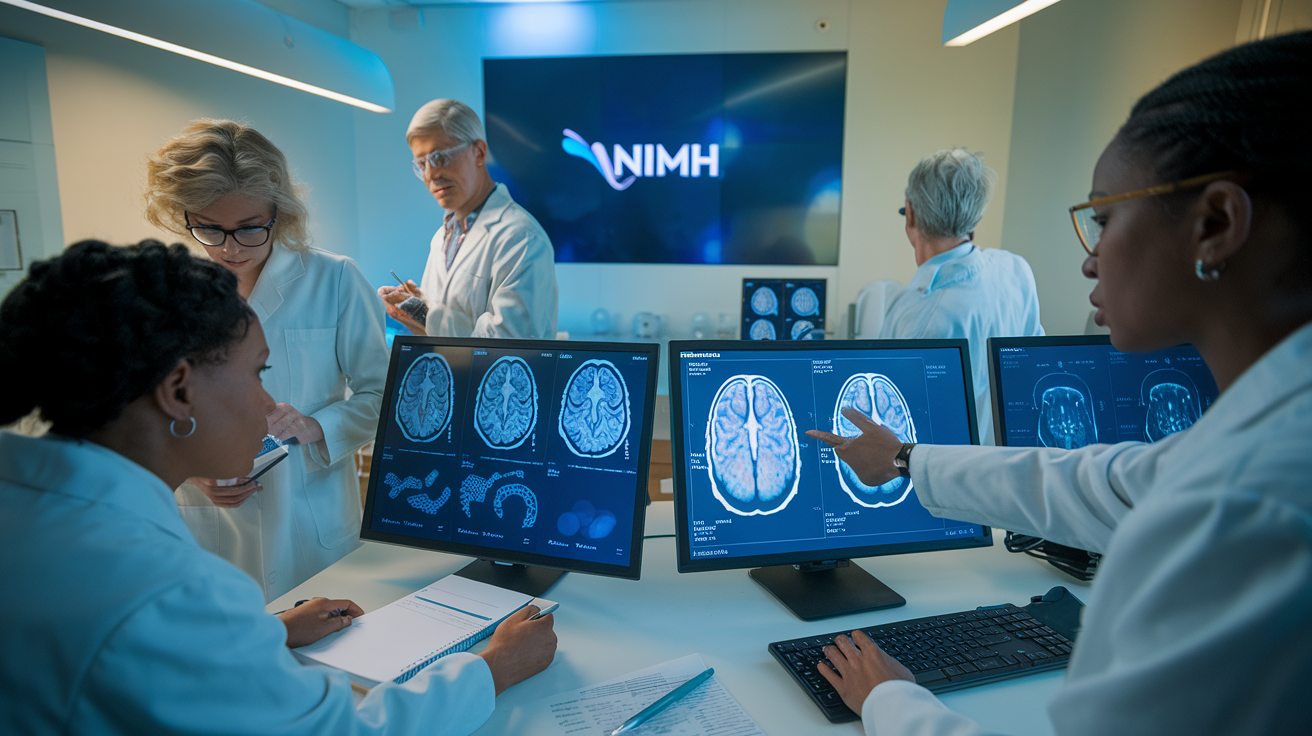
NIMH’s Research Initiatives on Depression
The National Institute of Mental Health (NIMH) stands at the forefront of depression research in the United States. They’re not just gathering data – they’re actively changing how we understand, detect, and treat depression.
Depression affects millions, but NIMH researchers aren’t satisfied with the status quo. They’re digging deeper, asking tougher questions, and pursuing innovative approaches that could transform how we identify depression before it becomes severe.
Biomarker Research: Finding Depression’s Fingerprints
NIMH scientists are hunting for biological markers that could revolutionize how we spot depression. Think of it like finding a unique fingerprint for the condition.
They’re looking at:
- Brain imaging studies that track changes in neural activity and connectivity
- Blood tests that measure inflammation markers and stress hormones
- Genetic profiles that might predict who’s at higher risk
A groundbreaking NIMH study found that certain patterns of brain activity, particularly in the amygdala and prefrontal cortex, appear consistently altered in people with depression – even before they experience major symptoms. This could eventually lead to screening tools that catch depression early, much like how we screen for physical health conditions.
The RDoC Framework: Rethinking Mental Health Classification
NIMH’s Research Domain Criteria (RDoC) initiative is shaking up how we categorize mental health conditions. Instead of fitting people into rigid diagnostic boxes, they’re looking at depression across multiple dimensions:
- Negative valence systems (how we process negative experiences)
- Positive valence systems (how we experience reward and motivation)
- Cognitive systems (attention, perception, and memory)
- Social processes (how we interact with others)
- Arousal/regulatory systems (sleep, wakefulness, and stress response)
This approach helps researchers spot warning signs across these domains rather than waiting for someone to check enough boxes for a traditional diagnosis. It’s a more nuanced, personalized approach to catching depression in its early stages.
Technology-Driven Detection Methods
NIMH is backing research that uses everyday technology to spot depression signs:
- Smartphone apps that analyze speech patterns, detecting subtle changes in tone and word choice that might signal developing depression
- Wearable devices that track sleep, activity levels, and heart rate variability
- Social media analysis tools that can identify shifts in online behavior linked to depression onset
One NIMH-funded project developed an algorithm that identifies depression risk based on changes in typing patterns and smartphone use. The program detected early warning signs with nearly 80% accuracy in preliminary studies – weeks before participants reported feeling depressed.
Addressing High-Risk Populations
NIMH researchers recognize that certain groups face higher depression risks:
- Teenagers and young adults experiencing major life transitions
- Pregnant women and new mothers
- People with chronic medical conditions
- Individuals who’ve experienced trauma or significant loss
- Older adults facing isolation and health challenges
They’re developing specialized screening approaches for these populations. For example, an NIMH-supported screening program for postpartum depression catches subtle signs like changes in mother-infant bonding patterns and sleep disruptions – often before more obvious symptoms appear.
Prevention-Focused Research
NIMH isn’t just researching how to detect depression – they’re investigating how to prevent it entirely. Their prevention research focuses on:
- Resilience-building interventions for children and teens
- Stress management techniques that can be widely implemented
- Digital mental health tools that provide early intervention
- Community-based approaches to supporting mental wellness
A five-year NIMH study showed that cognitive-behavioral prevention programs reduced depression onset by nearly 50% in high-risk teens when implemented before significant symptoms appeared.
Clinical Trials: Testing New Approaches
NIMH maintains an extensive clinical trials network testing innovative approaches to early detection and intervention:
- Rapid-acting treatments that can quickly address emerging symptoms
- Combined therapy/medication approaches tailored to individual profiles
- Precision medicine protocols that match treatments to specific depression subtypes
- Digital therapeutics that can be deployed at the first sign of trouble
Their FAST-MAS (Fast-Acting Treatments for Major Affective Disorders) program specifically targets development of interventions that work within days rather than weeks – crucial for halting depression before it deepens.
Community Participation Opportunities
NIMH actively invites public participation in their research:
- The Depression and Bipolar Support Alliance partners with NIMH to recruit study participants
- The All of Us Research Program collects data from diverse participants to better understand depression across different populations
- TrialMatch connects individuals showing early depression signs with appropriate studies
Getting involved not only advances science but provides individuals with potential early intervention options they might otherwise miss.
Translating Research to Practice
NIMH works to ensure their findings reach healthcare providers quickly through:
- Clinical practice guidelines that emphasize early detection
- Provider training programs focused on recognizing subtle depression indicators
- Implementation science research that helps effective screening tools reach community settings
Their ALACRITY centers (Advanced Laboratories for Accelerating the Reach and Impact of Treatments for Youth and Adults with Mental Illness) specifically focus on moving research findings into real-world settings where they can help people before depression takes hold.
The Future of Early Depression Detection
NIMH’s research roadmap includes exciting developments on the horizon:
- AI-powered risk prediction models that integrate multiple data sources
- Home-based neuroimaging technologies that could make brain-based detection accessible
- Personalized early intervention packages matched to individual risk profiles
- Integration of depression screening into routine primary care
Their recently launched Accelerating Medicines Partnership for Psychiatric Disorders aims to identify and validate biomarkers that could lead to screening tools within the next decade.
NIMH research offers hope that in the near future, we might catch depression at its earliest stages – when intervention is most effective and before it significantly impacts lives.
Explore clinical trials about depression
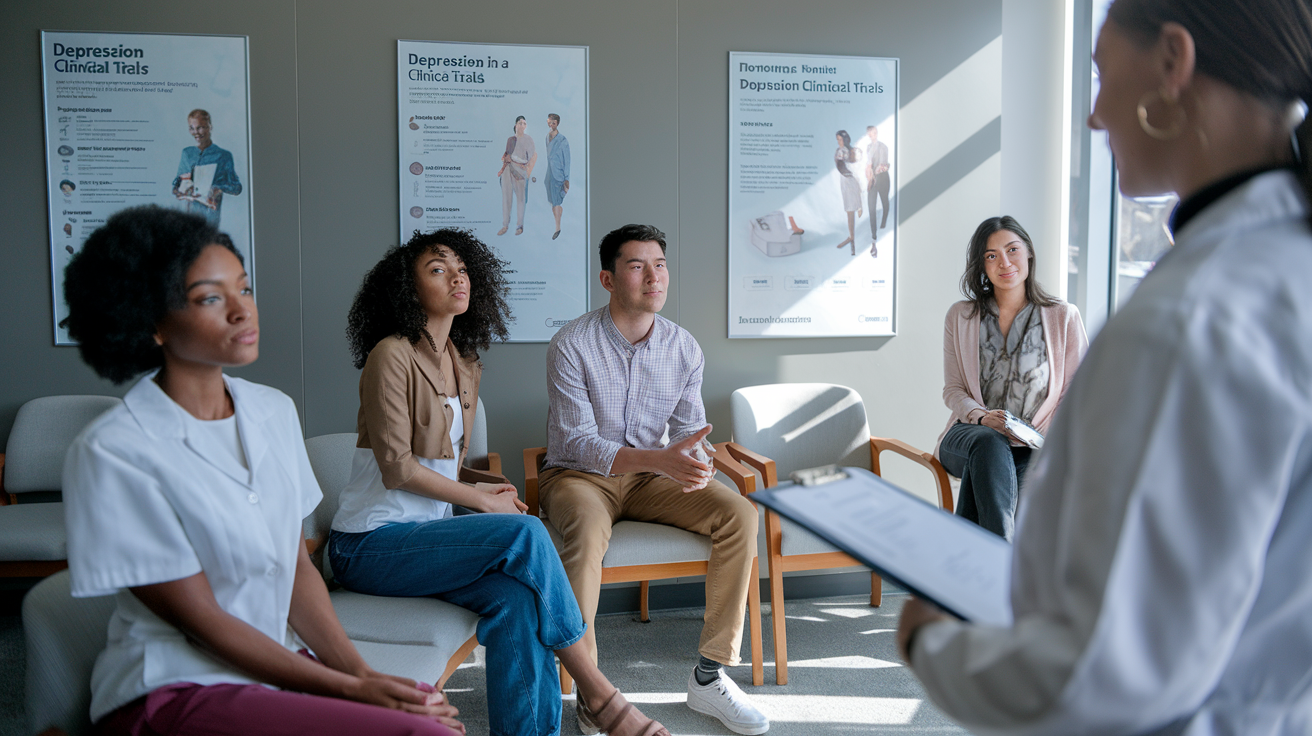
Understanding Clinical Trials for Depression
Clinical trials are the backbone of medical advancement, especially when it comes to mental health conditions like depression. If you’re struggling with depression or know someone who is, participating in a clinical trial might be worth considering – both for potential personal benefit and to help researchers develop better treatments for others.
How Clinical Trials Work for Depression
Clinical trials for depression typically test new medications, therapeutic approaches, or combinations of treatments. They’re carefully designed studies that follow strict protocols to ensure safety and gather reliable data.
Most depression trials follow a similar pattern:
- Screening to determine if you qualify
- Baseline assessments of your depression symptoms
- Random assignment to either the treatment or control group
- Regular follow-up visits to track your progress
- Final assessments to measure outcomes
The whole process is overseen by medical professionals who monitor your safety throughout the study.
Why Consider Participating?
I know what you’re thinking – why would anyone volunteer to be a “guinea pig”? But there are some compelling reasons:
- Access to cutting-edge treatments before they’re widely available
- Free or low-cost care that might otherwise be unaffordable
- Regular monitoring by depression specialists
- Contributing to scientific knowledge that could help millions
For many people with treatment-resistant depression, clinical trials offer hope when standard treatments haven’t worked.
Finding Depression Clinical Trials Near You
Looking for a clinical trial doesn’t have to be complicated. Several resources make it easy to find studies that might be a good fit:
National Databases
The largest database of clinical trials is ClinicalTrials.gov, run by the National Library of Medicine. You can search specifically for depression trials and filter by location.
The National Institute of Mental Health (NIMH) also maintains a list of studies they’re funding through their website. Their studies tend to be high-quality and well-designed.
Academic Medical Centers
Universities with medical schools often conduct depression research. Check the websites of academic medical centers near you and look for sections labeled “research” or “clinical trials.”
Major depression research is happening at institutions like:
- Johns Hopkins University
- Harvard Medical School
- Stanford University
- UCLA
- Columbia University
Mental Health Organizations
Organizations like the Depression and Bipolar Support Alliance (DBSA) and the Anxiety and Depression Association of America (ADAA) sometimes list clinical trials or can point you toward active research.
Questions to Ask Before Participating
When you find a trial that interests you, don’t rush in. Ask these important questions first:
- What’s being studied? Understand exactly what treatment approach is being tested.
- What will I be required to do? Know the time commitment, required visits, and procedures.
- What are the potential risks and benefits? All treatments have both.
- Will I be taking a placebo? Some studies compare the treatment to a placebo (inactive substance).
- Can I continue my current treatments? Some trials require you to stop current medications.
- What happens when the trial ends? Will you have access to the treatment if it worked for you?
- What costs will I be responsible for? Many trials cover treatment costs, but not always travel or time off work.
Types of Depression Clinical Trials
Depression research covers a wide range of approaches:
Medication Trials
These test new antidepressants or new uses for existing medications. Researchers are particularly interested in:
- Medications that work faster than traditional antidepressants
- Drugs with fewer side effects
- Treatments for people who haven’t responded to standard medications
Psychotherapy Studies
These evaluate talk therapies like:
- New cognitive-behavioral therapy (CBT) approaches
- Mindfulness-based cognitive therapy
- Interpersonal therapy
- Digital or app-based therapy delivery
Brain Stimulation Research
Some of the most exciting depression research involves non-drug approaches like:
- Transcranial magnetic stimulation (TMS)
- Transcranial direct current stimulation (tDCS)
- New forms of electroconvulsive therapy (ECT)
- Deep brain stimulation for severe, treatment-resistant cases
Lifestyle Interventions
Not all clinical trials involve medications or devices. Some study:
- Exercise programs for depression
- Nutrition and dietary approaches
- Sleep interventions
- Stress reduction techniques
What to Expect During a Depression Trial
Participation usually involves:
Screening Visit
You’ll meet with research staff who will explain the study in detail and have you sign an informed consent form. They’ll assess your depression symptoms and overall health to determine if you qualify.
Randomization
If you qualify, you’ll be randomly assigned to a treatment group. In many studies, neither you nor the researchers will know which group you’re in (called “double-blind” studies).
Treatment Period
This could last weeks or months, depending on the study. You’ll take the medication or receive the therapy being studied.
Regular Assessments
You’ll have scheduled visits to evaluate your depression symptoms and check for any side effects. These often involve questionnaires and interviews.
Study Completion
At the end, you’ll have a final assessment. The research team should discuss your options for continuing treatment after the study ends.
The Reality of Clinical Trials
Clinical trials aren’t for everyone. There are legitimate concerns to consider:
- You might receive a placebo instead of active treatment
- The experimental treatment might not work for you
- There could be unexpected side effects
- The time commitment can be substantial
But for many people, the benefits outweigh these concerns. The care in clinical trials is often more thorough than standard treatment, with more frequent check-ins and detailed assessments.
Making Your Decision
Ultimately, participating in a clinical trial is a personal choice. Talk it over with your current healthcare providers and loved ones. Remember that you can withdraw from a study at any time if it’s not working for you.
For people who feel stuck in their depression treatment, clinical trials represent a path forward – a chance to try something new while contributing to our understanding of this complex condition.
Share outreach materials about depression
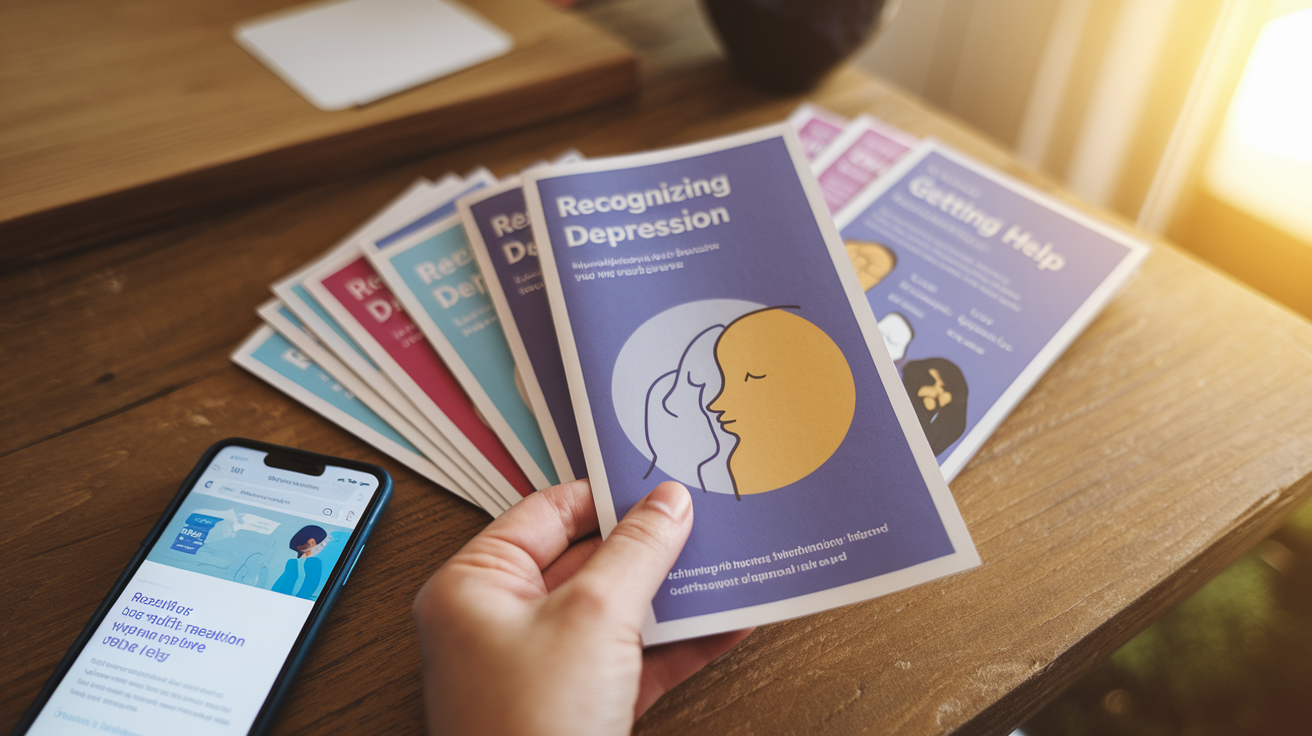
Digital shareables
Ever notice how a simple share on social media can spark a conversation? When it comes to depression awareness, sharing digital resources isn’t just helpful—it can be life-saving.
Digital materials about depression are perfect for spreading awareness because they’re easy to pass along. A quick post, a retweet, or a story share can reach hundreds of people within minutes.
Here’s what makes digital shareables so powerful for depression awareness:
- They meet people where they already are—scrolling through their phones
- They can be shared privately with someone you’re concerned about
- They break down complex information into digestible chunks
- They often use visuals that connect emotionally
Effective Digital Resources Worth Sharing
Social Media Graphics
Simple, visually appealing graphics work wonders on platforms like Instagram and Facebook. The best ones include:
- Brief symptom checklists that help people recognize warning signs
- Myth-busting infographics that combat stigma
- Quotes from people who’ve experienced depression
- Statistics presented in context (not just numbers, but what they mean)
- Crisis hotline information with a supportive message
Look for graphics from organizations like Mental Health America, NAMI, or the American Foundation for Suicide Prevention. Their materials are typically well-researched and designed for sharing.
Short Videos
Videos under 2 minutes get the most engagement online. Effective depression awareness videos often:
- Feature real people sharing their experiences
- Explain symptoms in relatable ways
- Offer practical support strategies
- End with clear action steps or resources
TED Talks about depression or animated explainer videos from reputable health organizations make excellent shareable content. The National Institute of Mental Health (NIMH) produces quality video content that breaks down complex mental health concepts.
Interactive Tools
Online screening tools and quizzes can help people take that first step toward understanding what they’re experiencing. These tools aren’t diagnostic but can encourage someone to seek professional help.
The PHQ-9 (Patient Health Questionnaire) is widely used and available digitally through many mental health websites. It’s a simple screening tool that helps people assess depression symptoms.
When sharing these tools, always emphasize that they’re not replacements for professional evaluation but rather starting points for conversation.
Creating Your Own Digital Shareables
Don’t see exactly what you need? Creating your own digital materials about depression isn’t as hard as you might think:
Simple Quote Graphics
Using free tools like Canva or Adobe Express, you can create simple graphics featuring:
- Supportive messages for those struggling
- Facts about depression treatment success rates
- Reminders that depression is an illness, not a weakness
- Encouragement to reach out for help
The most effective quote graphics use readable fonts, contrasting colors, and keep text brief. Include your source if you’re citing statistics or research.
Personal Story Snippets
If you’ve experienced depression and are comfortable sharing, brief snippets of your journey can be incredibly powerful. Focus on:
- Moments when you recognized something was wrong
- What actually helped (versus what didn’t)
- How recovery isn’t linear
- The importance of professional support
Always protect your privacy and share only what feels comfortable. Sometimes the most impactful messages are the simplest: “I’ve been there too. Help is available.”
Resource Lists
Compile depression resources specific to your community or audience. These might include:
- Local mental health providers who accept various insurance plans
- Support groups meeting times and locations
- Apps recommended by mental health professionals
- Books that offer genuine insight into depression
Format these as simple PDFs or even as carousel posts for Instagram.
Best Practices for Sharing Depression Content
The way you share information about depression matters just as much as what you share:
Mind Your Timing
Pay attention to world events and what’s happening in your community. During times of collective stress or tragedy, people may be more receptive to mental health content—but they might also need more gentle approaches.
Avoid sharing potentially triggering content on anniversaries of traumatic events or during holidays, which can already be difficult for many people.
Include Action Steps
Every piece of depression information you share should include something actionable:
- A specific phone number to call for help
- A link to find a therapist
- A simple self-care strategy to try
- An invitation to reach out directly to you (if you have capacity)
Information without action can sometimes increase feelings of helplessness.
Consider Your Audience
Different platforms reach different demographics:
- Instagram and TikTok tend to reach younger audiences
- Facebook often reaches older adults and parents
- LinkedIn can be effective for workplace mental health content
- Email newsletters might better reach those who aren’t active on social media
Tailor your depression awareness content to fit both the platform and its typical users. Language that resonates with teens will differ from what speaks to older adults.
Avoid Potential Pitfalls
When sharing about depression:
- Skip dramatic or potentially triggering images like self-harm depictions
- Don’t use language that glorifies or romanticizes depression
- Avoid oversimplifying depression as just “sadness” or something easily fixed
- Never suggest that depression is a choice or character flaw
Always prioritize accuracy and hope in equal measure.
Measuring Your Impact
How do you know if your digital shareables about depression are making a difference? Look for:
- Engagement that goes beyond likes (comments sharing experiences, private messages)
- Shares to personal profiles rather than just public reshares
- Questions about resources or how to get help
- People tagging others who might benefit from the information
Sometimes the most meaningful impact happens privately—someone seeing your content and reaching out for help without ever letting you know your share made the difference.
Digital shareables about depression aren’t just educational tools; they’re invitations to conversation. Each share sends a message: “It’s okay to talk about this. You’re not alone.” In a world where mental health stigma still exists, that simple permission to speak openly saves lives.
When we share quality information about depression, we’re doing more than spreading awareness—we’re building communities of support, one post at a time.
Find help and support

Reaching Out for Professional Help
Depression isn’t something you should face alone. When those dark clouds hover over your life day after day, professional support can make all the difference. Think about it – if you broke your leg, you wouldn’t just sit at home hoping it heals correctly. Mental health deserves the same level of care.
Your first stop might be your primary care doctor. They can rule out physical conditions that sometimes mimic depression symptoms and refer you to mental health specialists if needed. Many people find this familiar setting less intimidating for that first conversation about how they’re feeling.
Mental health professionals come in different types:
- Psychiatrists – Medical doctors who can prescribe medication and provide therapy
- Psychologists – Specialists who provide therapy and psychological testing
- Licensed counselors or therapists – Trained professionals who offer various therapy approaches
- Psychiatric nurse practitioners – Advanced practice nurses who can provide therapy and, in many states, prescribe medication
Finding the right fit matters. Some people connect immediately with the first professional they see. Others might need to try a few different providers before finding someone they click with. That’s completely normal.
When to Seek Immediate Help
Sometimes depression requires urgent attention. Don’t wait to reach out if you’re experiencing:
- Thoughts of harming yourself or others
- Feeling like you might act on suicidal thoughts
- Severe symptoms that make daily functioning impossible
- Hallucinations or detachment from reality
The National Suicide Prevention Lifeline (988) provides 24/7 support for people in distress. In a crisis, you can also go to your nearest emergency room or call 911.
Support Groups and Peer Connections
There’s something powerful about talking with people who truly understand because they’ve been there. Support groups create spaces where you can share experiences, learn coping strategies, and feel less alone.
Many organizations offer free or low-cost support groups:
- National Alliance on Mental Illness (NAMI) runs peer-led groups nationwide
- Depression and Bipolar Support Alliance (DBSA) hosts both in-person and online groups
- Mental Health America provides resources for finding local support options
Online communities have expanded access to peer support. Forums and social media groups dedicated to mental health discussions allow people to connect regardless of location or schedule constraints. Just remember that while peer support is valuable, it works best alongside professional care.
Digital Resources and Apps
Technology has opened new doors for mental health support. Evidence-based apps can supplement traditional treatment by offering tools for:
- Mood tracking to identify patterns and triggers
- Guided meditation and mindfulness practices
- Cognitive behavioral therapy exercises
- Daily check-ins and coping skill development
Some popular options include Headspace, Calm, Woebot, and MoodMission. Many therapy providers also offer teletherapy sessions, making help accessible even when you can’t leave home.
Navigating Treatment Options
Depression treatment isn’t one-size-fits-all. What works wonderfully for one person might not help another. Most people benefit from a combination approach:
Therapy Approaches
Different therapy styles target depression in various ways:
- Cognitive Behavioral Therapy (CBT) helps identify and change negative thought patterns
- Interpersonal Therapy focuses on improving relationships and communication
- Psychodynamic Therapy explores how past experiences affect current feelings
- Acceptance and Commitment Therapy (ACT) teaches mindfulness and acceptance of difficult emotions
Medication Options
Antidepressants can be life-changing for many people with depression. They work by balancing chemicals in the brain called neurotransmitters. Common types include:
- Selective Serotonin Reuptake Inhibitors (SSRIs)
- Serotonin and Norepinephrine Reuptake Inhibitors (SNRIs)
- Atypical antidepressants
- Tricyclic antidepressants
Finding the right medication often takes time and patience. It’s normal to try different options before discovering what works best for your body and brain chemistry.
Supporting a Loved One
Watching someone you care about struggle with depression can feel overwhelming. You want to help, but might worry about saying or doing the wrong thing. Here’s how you can provide meaningful support:
- Listen without judgment – Sometimes people just need to be heard
- Avoid toxic positivity – Phrases like “just cheer up” or “look on the bright side” can make people feel misunderstood
- Offer specific help – Instead of “let me know if you need anything,” try “I’m going grocery shopping, can I pick up some things for you?”
- Learn about depression – Understanding the condition helps you provide better support
- Encourage treatment – Gently suggest professional help, but avoid pressuring or ultimatums
- Take care of yourself – Supporting someone with depression can be emotionally taxing
Overcoming Treatment Barriers
Despite knowing help is available, many people still face obstacles to getting the care they need:
Financial Concerns
Mental health care can be expensive, but options exist:
- Check if your insurance covers mental health services (most are required to)
- Community health centers often offer sliding scale fees
- Some therapists reserve slots for reduced-fee clients
- University training clinics provide low-cost therapy with supervised students
- Employee Assistance Programs through work may offer free counseling sessions
Stigma and Shame
The lingering stigma around mental health keeps too many people suffering in silence. Remember:
- Depression is a health condition, not a personal failing
- Seeking help shows strength, not weakness
- You wouldn’t hesitate to treat a physical illness—mental health deserves the same attention
- Sharing your story when you’re ready can help break down stigma for others
Access Challenges
For those in rural areas or with limited mobility, finding care can be particularly difficult. Telehealth has expanded access dramatically, allowing people to connect with providers from home. Community-based organizations and faith groups may also offer support resources when clinical options are limited.
Building Resilience Through Self-Care
While professional help is crucial, daily self-care practices strengthen your ability to manage depression:
- Movement – Even gentle physical activity releases mood-boosting chemicals
- Nature time – Research shows spending time outdoors can reduce depression symptoms
- Sleep hygiene – Establishing regular sleep patterns helps stabilize mood
- Nutrition – Eating regular, balanced meals supports brain function
- Mindfulness – Practices that bring you into the present moment can interrupt negative thought spirals
- Creative expression – Art, music, writing, or other creative outlets provide emotional release
These practices don’t replace treatment but work alongside it to support recovery and prevent relapse.
The path through depression isn’t always straight or simple, but with the right support, it becomes more manageable. You deserve help, and despite how depression might make you feel, you’re worth every effort it takes to find it.
Additional federal resources

NIMH Resources for Depression
The National Institute of Mental Health (NIMH) offers comprehensive resources for anyone concerned about depression. Their website features plain-language guides explaining depression symptoms, treatment approaches, and current research findings. What makes NIMH particularly valuable is their screening tools section, where you can find self-assessment questionnaires to help determine if your symptoms warrant professional attention.
NIMH also maintains an extensive database of ongoing clinical trials. If standard treatments haven’t worked for you, participating in a study might open doors to cutting-edge therapies not yet widely available. Their research updates section keeps you informed about breakthroughs in understanding depression’s biological mechanisms.
Don’t overlook their crisis resources page. It provides immediate support options including the 988 Suicide & Crisis Lifeline and the Crisis Text Line. These services are staffed 24/7 by trained counselors who can help during acute emotional distress.
SAMHSA’s Support Systems
The Substance Abuse and Mental Health Services Administration (SAMHSA) runs several essential programs for people experiencing depression. Their National Helpline (1-800-662-HELP) operates 24/7, offering referrals to local treatment facilities, support groups, and community organizations. What’s particularly helpful is that this service is confidential and available in both English and Spanish.
SAMHSA’s Treatment Locator tool is a game-changer when you’re struggling to find appropriate care. Simply enter your zip code, and it generates a list of nearby mental health providers who accept various insurance plans, including Medicaid and Medicare.
Their Disaster Distress Helpline provides specialized support for those whose depression has been triggered or worsened by natural disasters, mass shootings, or other traumatic events. This unique resource acknowledges how external circumstances can profoundly impact mental health.
CDC Mental Health Resources
The Centers for Disease Control and Prevention (CDC) approaches depression from a public health perspective, offering resources that examine the condition in broader social contexts. Their data-driven reports highlight depression prevalence across different demographics, which can help you understand you’re not alone in your struggle.
The CDC’s Prevention Research Centers work on community-based programs that address depression’s social determinants. Their website shares success stories from these initiatives, providing models that might be implemented in your community.
Parents will find the CDC’s children’s mental health section particularly valuable. It contains guidelines for recognizing depression symptoms in kids and teens, which often present differently than in adults. They offer concrete strategies for supporting young people experiencing depression, including communication techniques and when to seek professional help.
VA Mental Health Services
Veterans face unique mental health challenges, and the Department of Veterans Affairs (VA) has developed specialized depression resources in response. Their VA Mental Health website section breaks down available services by need, making it easier to navigate the sometimes overwhelming system.
The VA offers both in-person and telehealth options for depression treatment. Their mobile apps like PTSD Coach and Mindfulness Coach can supplement formal therapy, providing tools for managing symptoms between appointments.
Community-based Vet Centers provide confidential counseling specifically designed for combat veterans and those who experienced military sexual trauma. These centers often feel more accessible than large VA medical facilities, with a focus on peer support and readjustment counseling.
Medicare Mental Health Coverage
For older Americans, Medicare provides significant coverage for depression treatment. Medicare Part B covers outpatient mental health services including psychiatric evaluations, medication management, and individual and group therapy. What many don’t realize is that Medicare now covers telehealth mental health services permanently, making care more accessible for those with mobility issues or who live in rural areas.
Under Medicare Part D, most antidepressant medications are covered, though specific formularies vary by plan. The “donut hole” coverage gap has been closing in recent years, making prescription costs more manageable for those on fixed incomes.
Medicare’s Annual Wellness Visit includes depression screening at no cost to beneficiaries. This preventive service helps catch symptoms early, when treatment is typically most effective. If you’re on Medicare, be sure to schedule this yearly appointment.
NIH Research Opportunities
The National Institutes of Health (NIH) funds groundbreaking depression research, offering opportunities for public involvement. The All of Us Research Program invites participants to share health data to help researchers better understand how depression affects different populations. Your participation could help develop more personalized treatment approaches.
NIH’s Research Portfolio Online Reporting Tools (RePORT) lets you track current depression research projects and their findings. This transparency allows you to see exactly how federal research dollars are being spent and what questions scientists are exploring.
For those interested in the biological aspects of depression, the NIH’s Brain Research Through Advancing Innovative Neurotechnologies (BRAIN) Initiative provides fascinating insights into the neural circuits involved in mood regulation. Their website explains complex research in accessible language.
Federal Student Aid Mental Health Resources
College students facing depression can find support through various federal programs. The U.S. Department of Education recognizes mental health as a potential disability, meaning students with documented depression may qualify for accommodations under Section 504 and the Americans with Disabilities Act.
Federal work-study programs often include positions at campus counseling centers, giving students both employment and exposure to mental health resources. Additionally, some federal loan forgiveness programs exist for graduates who pursue careers in mental health services in underserved areas.
Campus-based grants often fund student mental health initiatives, including peer support programs and awareness campaigns. These resources create more supportive campus environments for students struggling with depression.
Indian Health Service Mental Health Programs
The Indian Health Service (IHS) addresses depression in Native American and Alaska Native communities through culturally responsive approaches. Their behavioral health programs integrate traditional healing practices with contemporary treatment methods, acknowledging the importance of cultural connection in recovery.
IHS’s Tele-Behavioral Health Center of Excellence extends specialized mental health services to remote tribal communities. This telehealth program helps overcome geographic barriers to care that have historically limited access.
Community-based programs like the Methamphetamine and Suicide Prevention Initiative address depression and suicide risk factors specific to tribal populations. These programs are developed with tribal input, ensuring they meet the unique needs of each community.

Recognizing the early signs of depression is crucial for timely intervention and treatment. Throughout this guide, we’ve explored the fundamentals of depression, highlighted reliable resources for further education, and examined NIMH’s ongoing research efforts to better understand and address this condition. We’ve also discussed available clinical trials, shared outreach materials, and provided guidance on finding appropriate help and support.
Mental health awareness starts with education and vigilance. If you or someone you know is exhibiting any of the seven red flags discussed, don’t hesitate to reach out to healthcare professionals. Remember that depression is treatable, and early recognition of symptoms can make a significant difference in recovery outcomes. Take the first step today by using the federal resources we’ve shared to access the support needed for better mental health.
